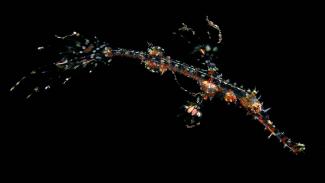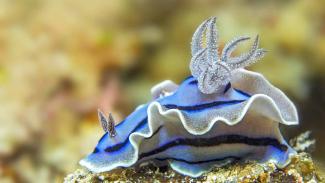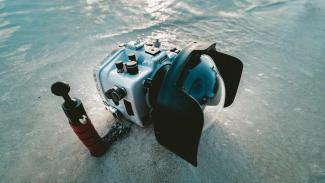
Phil North
If you are an avid underwater photographer, choosing the right destination for your dive holiday or expedition can make a huge difference to your overall experience and enjoyment. It can also make a huge difference to the results on your camera.
The truth is that a great dive site isn't necessarily and great site for underwater photography. So what does make a destination ideal for photography and what criteria should you use to help you make a decision.
Read on to find out....
The right environment
The underwater environment plays a very big role in your photos. Just like nature photography on land, the location plays a big part in your chances of taking great pictures. Generally speaking, calm, shallow dive sites with good visibility make for the best spots for underwater photography.
Photographers seldom take the perfect shot at the first attempt. Calm conditions afford you the time you need time to compose your shot well, get the camera settings right and take a few shots of the same subject.
Staying shallow means, of course, that you can dive for longer, which means more time taking photos. It also means there is more light, which means more colour and more options in terms of the camera settings you can use and the styles of photograph you can take.
Good visibility also means that you will have more light to play with and so more options. It also means less backscatter and clear, crisp images, saving you hours of editing time later.
Conditions of course change on a day to day basis, but picking a spot that has a reputation for consistently good conditions and some nice shallow reefs & subjects will give you a better chance of taking nice photos on every dive.
Tara North

Tara North
Dive center facilities
The facilities on offer for photographers is very important. Check if the dive centre has rinse tanks, charging points, somewhere to store and set-up your camera and housing, good space and facilities on the boat.
It's also worth speaking to a dive centre to get a feel for if they are photographer friendly or not. Small groups, private guides, or specialist photography dives make a big difference to the ability to spend time getting great shots.
Lastly, if you are serious about taking photos, you may well want to dive somewhere that allows you to make numerous dives per day and lets you return to the same site once you know it better to have another go. Areas with plenty of dive sites close-by, or with good shore diving are great for underwater photographers.

Behang
You might also enjoy...
Scuba Diving Terms - A Dummies Guide
Frans Daniels
Scuba-diving, like many activities seems to have a language all of its own, with confusing concepts, technical terminology and an ocean of jargon to decipher.
To help newcomers break through this barrier we've developed a dummies guide to scuba diving, so that you can get to grips with what divers are talking about. Find out what SCUBA stands for, what PADI is, what it is to be narked, and so much more.
Lankayan
The picturesque island of Lankayan is now regarded as one of Malaysia’s finest dive destinations.
The island, which is just off east the coast of Borneo in the Sulu Sea, has only one resort, ensuring uncrowded dive sites and plenty of relaxation.
Dummie's guide to camera kit
Jakob Owens







